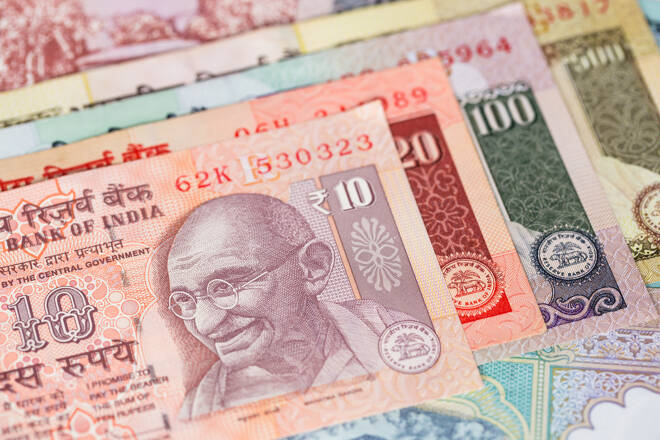USD/INR: Rupee Snaps Two-Day Losing Streak, Gains 9 Paise In Early Trade
The Indian rupee snapped its two-day losing streak in early trade on Friday, appreciating by over 8 paise against the U.S. dollar amid sell-off seen in the equity market.
The Indian rupee snapped its two-day losing streak in early trade on Friday, appreciating by about 9 paise against the U.S. dollar amid sell-off seen in the equity market.
The dollar to rupee conversion today fell to 74.6150 against the U.S. currency, down from Thursday’s close of 74.705. The rupee has lost over 170 paise in June – posting the biggest monthly drop since March 2020, the early days of the pandemic, and weakened about 30 paise so far in this month.
“Weakness continued in the rupee, which depreciated by another 8 paise and closed at 74.7 levels. A sharp reversal in equities from higher levels triggered more selling. The dollar index posted moderate losses as it retreated from Wednesday’s three-month high. The dollar was weighed down on Thursday by negative carryover from Wednesday’s dovish minutes of the June 15-16 FOMC meeting,” noted analysts at ICICI Direct.
The dollar index, a measurement of the dollar’s value relative to six foreign currencies, was trading 0.03% higher at 92.448 – not far from its three-month high of 92.844. That was largely driven by the minutes of the Federal Reserve’s June policy meeting which reaffirmed that the U.S. central bank to continue to make progress in scaling back its massive asset purchases as soon as this year.
The world’s dominant reserve currency, the USD, is expected to rise further over the coming year, largely driven by the Fed’s expectation of two rate hikes in 2023. A strengthening dollar and growing risk that the Federal Reserve would tighten its monetary policy earlier than expected would push the USD to INR pair higher.
“Inflation has risen strongly in recent months, with the Fed surprising markets at the June meeting with a more hawkish stance. Meanwhile, the June labor market data confirmed that a solid US economic recovery is underway. Against this backdrop, the UBS Chief Investment Office is updating their forecasts to reflect a neutral view on the US dollar this year and strength next year,” noted analysts at UBS.
“Last year’s unprecedented expansion of the US Federal Reserve’s balance sheet has brought about a broad US dollar weakness. This phase is now gradually coming to an end, and CIO expects the next wave of USD appreciation to arrive early next year, or maybe even late this year. CIO, therefore, believes that the time has come to adjust their cyclical USD view.”
It is worth noting that sustained foreign fund outflows, higher oil prices, and firm U.S. dollar will continue to weigh on the rupee.
Global oil benchmark Brent futures traded 0.13% higher at $74.22 per barrel at the time of writing. On Tuesday, oil prices spiked to a three-year high of $77.84 per barrel as OPEC+ failed to reach an agreement. Higher oil prices would push up the inflation expectations and widen India’s trade deficit, which could hurt the Indian rupee.
The benchmark equity indices BSE Sensex was trading 121 points or 0.23% lower at 52,442, while the broader NSE Nifty traded 25.05 points or 0.16% lower at 15,702.05. Foreign institutional investors were net sellers in the capital market on Thursday as they offloaded shares worth Rs 554.92 crore, as per exchange data.
About the Author
Vivek has over five years of experience in working for the financial market as a strategist and economist.
